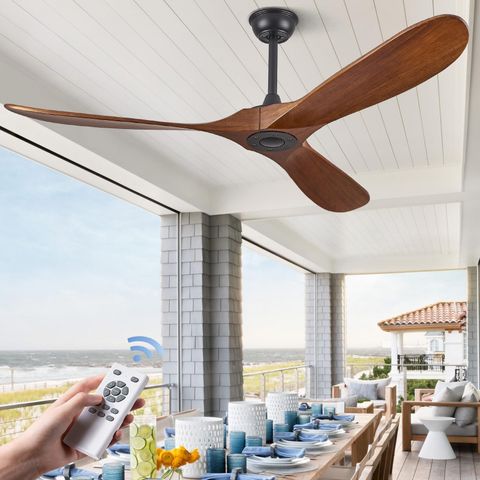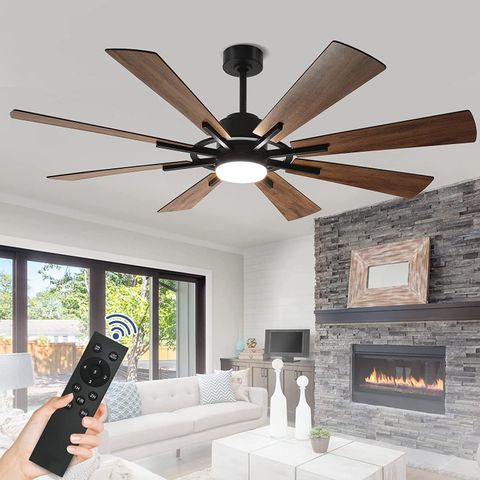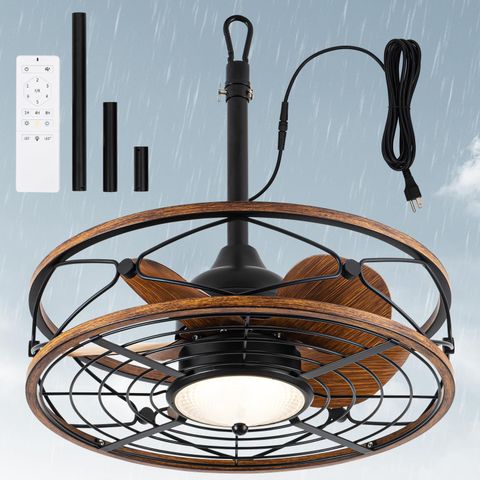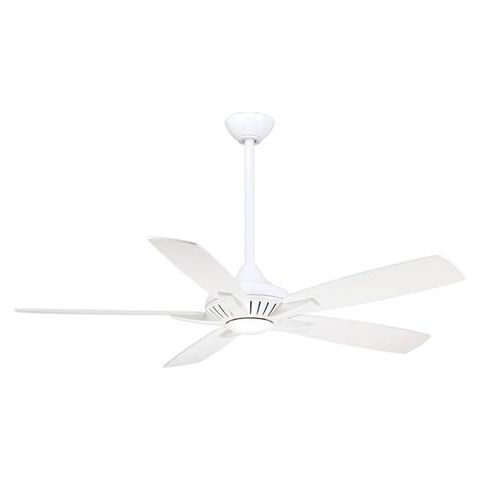When it comes to outdoor living spaces, the right ceiling fan can transform a plain patio into a comfortable retreat. But choosing the perfect fan isn’t just about style—it’s about functionality, durability, and ease of use. The best outdoor fans offer flexibility with dual control options, giving you the freedom to operate them from anywhere in your space.
Picture this: You’re relaxing on your backyard deck on a warm summer evening. The sun is setting, and you want to feel the breeze without having to get up and walk across the patio to flip a switch. This is exactly why many homeowners are drawn to outdoor ceiling fans that feature both remote controls and wall switches. It’s not just about convenience—it’s about creating a seamless experience that adapts to how you actually live. These dual-control fans represent the sweet spot between modern technology and practical design, offering the best of both worlds when it comes to managing your outdoor environment.
Understanding Outdoor Fan Basics
Before diving into the specifics of dual-control fans, it’s important to understand what makes outdoor fans different from their indoor counterparts. Outdoor fans face harsher conditions—sun exposure, moisture, temperature fluctuations, and even insects. This means they need to be built differently. Look for fans rated for outdoor use, often marked with an IP rating. The IP44 rating, for instance, indicates protection against solid objects larger than 1mm and water splashes. Think of it like a raincoat for your fan—protection from the elements is essential. Most outdoor fans come with weather-resistant materials and finishes designed to withstand rust and corrosion. When you’re shopping, pay attention to the motor type too. A high-quality motor will last longer and run more quietly than cheaper alternatives. The blade material matters too—aluminum blades are lighter and more durable than plastic ones, while wood blades offer a classic look but require more maintenance.
Remote Control Features and Benefits
Remote controls add a layer of convenience that can’t be overstated. Imagine being able to adjust your fan speed or turn it off from your couch without getting up. Many remote controls offer multiple settings, including dimming capabilities for integrated lighting. Some models even let you set timers or schedule operations. These features are especially useful during parties or when you’re entertaining guests. The remote should be easy to operate, with clearly labeled buttons and good battery life. Consider whether you prefer a simple numeric keypad or one with more advanced features like preset speeds and memory functions. Some remotes work with standard frequencies while others might use RF signals, so check compatibility with your existing home automation systems if you have them. Also, think about range—the remote should work reliably from across your entire outdoor area.
Wall Switch Integration Explained
While remotes are great for convenience, wall switches provide reliability and backup control. They’re particularly handy when you’re away from your remote or when the batteries die. Wall switches also give you the ability to install additional switches in different locations, allowing you to control the fan from multiple spots. This is especially useful in larger outdoor areas or when you have multiple fans. The installation process requires some electrical knowledge, but most modern fans come with detailed instructions. You’ll typically need to wire the fan directly to your home’s electrical system, ensuring proper grounding and voltage handling. Some fans allow for hardwiring while others support plug-in options. Check local building codes and consider hiring a licensed electrician if you’re unsure about any part of the installation process.
Key Features to Look For
When selecting an outdoor fan with dual controls, there are several must-have features. First, ensure the fan is rated for outdoor use and can handle your climate conditions. Look for motors that are specifically designed for outdoor applications, as they tend to be more robust. Energy efficiency matters too—fans with Energy Star certification can save you money on electricity bills over time. Consider the size of your space when choosing blade span. A 52-inch fan works well for large decks, while smaller spaces might benefit from 44-inch or 36-inch models. Lighting integration is another popular feature—many fans come with integrated LED lights that can be controlled separately or together with the fan. Weatherproofing is crucial, so look for fans with sealed motors and corrosion-resistant components. Some fans even feature automatic shut-off timers or smart connectivity for added convenience.
Installation Considerations
Proper installation is critical for safety and performance. Start by checking your ceiling’s weight capacity—outdoor fans are heavier than indoor ones and require sturdy mounting. If you’re installing in a covered area, make sure the mounting hardware is appropriate for your ceiling type. Some installations may require additional reinforcement or special brackets. Electrical considerations are vital—ensure your home’s wiring can handle the fan’s power requirements. In some cases, you might need to upgrade your electrical panel or hire an electrician. The mounting height also matters; fans should hang at least 8 feet above the ground for safety reasons. Consider the location of your wall switch and whether it will be easily accessible. If you’re installing multiple fans, plan the layout carefully to avoid interference between remote signals.
Maintenance and Longevity Tips
Outdoor fans require regular care to maintain their performance and appearance. Clean the blades monthly using a soft cloth and mild soap solution. Pay special attention to removing dust and debris that accumulate from wind and weather. Check the tightness of all screws and connections periodically, as vibrations can loosen components over time. Lubricate moving parts according to manufacturer instructions, usually every six months or annually. Keep an eye on the remote batteries and replace them before they die completely. Some fans have indicator lights that show when maintenance is due. Weatherproofing treatments might be necessary depending on your environment. In areas with high humidity or salt air, consider more frequent cleaning and inspection schedules. Proper maintenance extends the life of your investment significantly and keeps your outdoor space comfortable year-round.
Choosing an outdoor ceiling fan with both remote and wall switch options is about finding the perfect balance between convenience and reliability. These dual-control fans represent a smart investment in your outdoor living space, offering flexibility that adapts to your lifestyle. Whether you’re entertaining guests or simply relaxing after a long day, having control at your fingertips makes all the difference. Take your time to research the features that matter most to you, consider your specific outdoor environment, and don’t overlook the importance of proper installation and maintenance. The right fan can transform your outdoor space into a comfortable retreat that you’ll want to spend time in, regardless of the weather outside. Remember, the best fan is one that fits your needs, not necessarily the most expensive one on the shelf.














